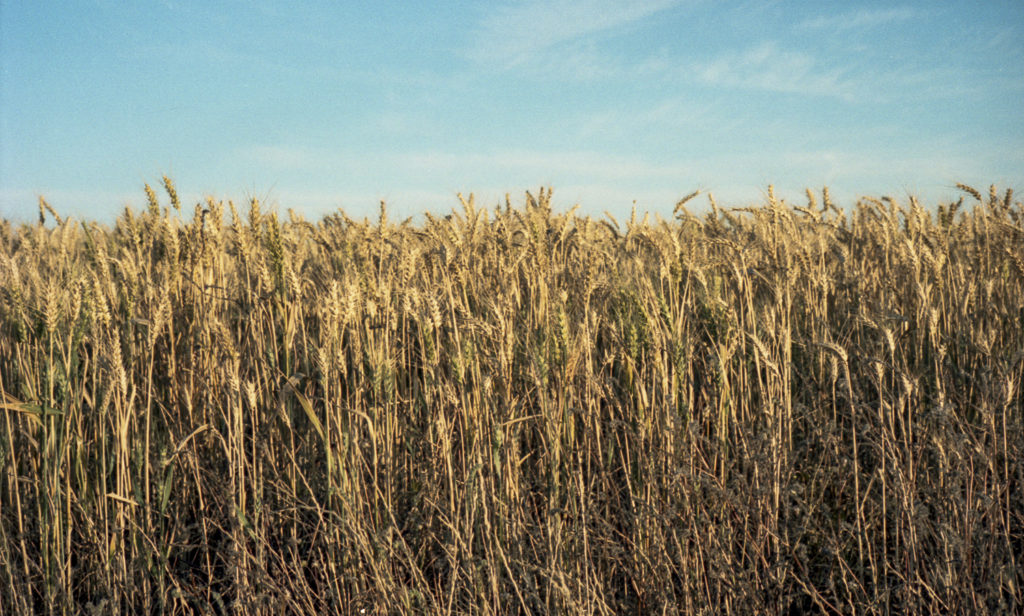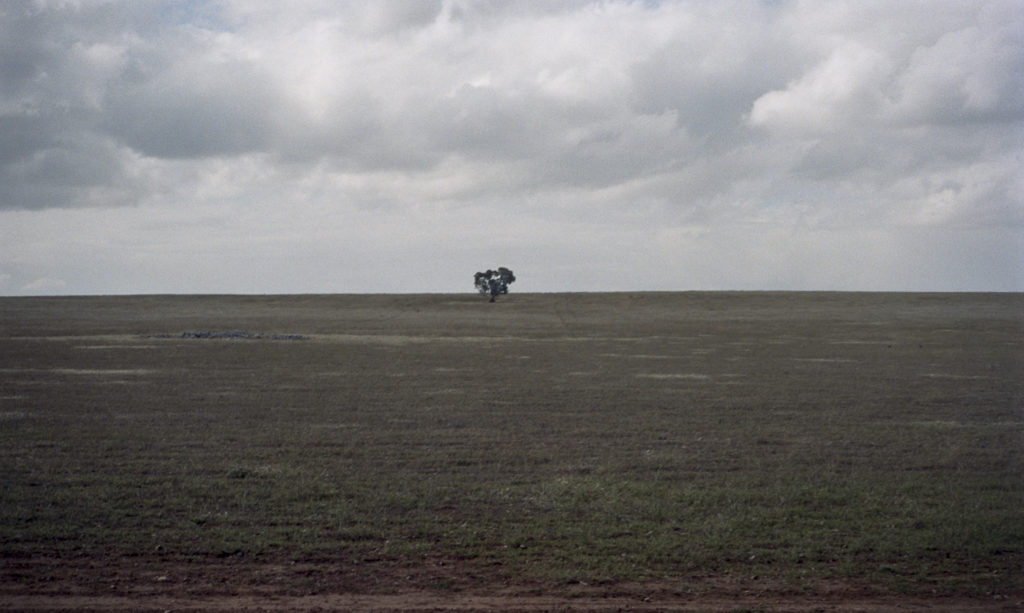The wheat was everywhere whilst I was on the Hopetoun road trip. I took a few 35mm snapshots of the dryland wheat fields with my old film Leica (an M4-P) whilst I was on my way back to our campsite at Hopetoun from Sea Lake. I’d been to Lake Tyrrell that afternoon to look for the remains of an old salt works butI didn’t have much luck. I just couldn’t find it.
The wheat field was somewhere on the road after I’d passed after Woomelang. It was a quick snap because I was hit by a swarm of mosquitos I was taking photos. The mosquitos made it impossible to spend the time setting up a large format camera to photograph this wheat field in the late afternoon light. 
It was just on the cusp of harvest time when I was there. It looked as if it was going to a bumper harvest, due to all the winter rain. That probably meant low prices and high rates of on-farm grain storage. A bumper harvest does mean income for famers and that, in turn, means that they are able to pay off debt.
The Mallee is all about growing wheat and Northwest Victoria is the centre of wheat production in Victoria. The wheat was everywhere I travelled and I kept on thinking of the impact of climate change in this region as I drove around. The near future is one of an increase in temperature, a decrease in rainfall more drought episodes and less groundwater. Presumably, that means a decline in both wheat yields and wheat quality, and a threat to the water currently being piped into the Wimmera Mallee from the Murray and Wimmera Rivers.

It looks as if the wheat farmers in the low rainfall Mallee (including the Loddon Mallee) are going to have to adapt to the drier conditions and to start making their farming practices more sustainable given the decrease in rainfall by 10% (with mild to moderate climate change) to 20% (with high climate change). They either adapt to Australia’s new climatic uncertainties or walk off the land. Adapt means rethinking the current mismatch of farming activities based on the European model and the underlying ecosystem.
The tax breaks to cut down the Mallee scrub and the wholesale the land clearing resulted in chronic soil erosion and salinity, problems made worse by the lack of rain. The old solution to the dry, barren inland space was to just add water and it gave rise to a culture of beating the odds as a way of coping with seasonal adversity such as droughts and floods.
The frontier cyclical story of surviving drought and then the rain is being fractured by the rainfall in the Mallee slowly decreasing. The economic pressures on farmers are to grow bigger and more efficient and to produce more cash flow by working the land more intensively in water-scarce areas. Hence the appeal of biotechnology and the idea of the drought resistant gene rather than making a shift to systems view of what conditions are in play and asking whether crops should be grown in marginal areas.

Adapting to climate change means achieving a vibrant agricultural industry attuned to the limitations of the Mallee’s climate and soil conditions yckmduw. This requires a new way of thinking.

